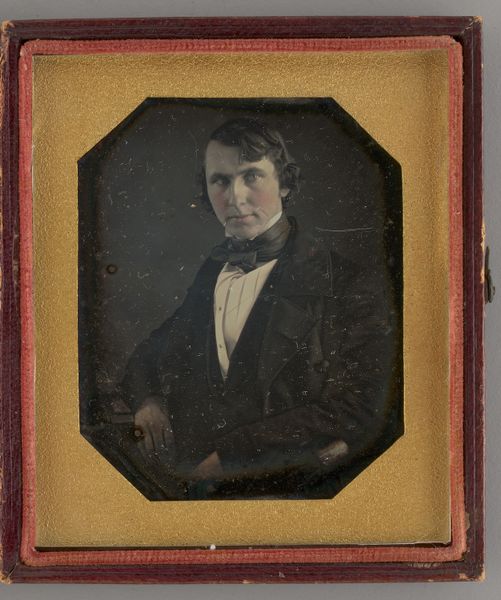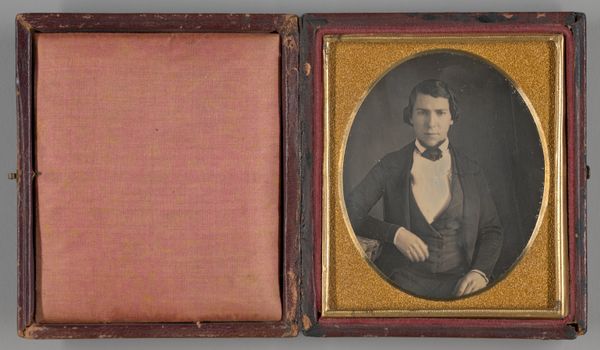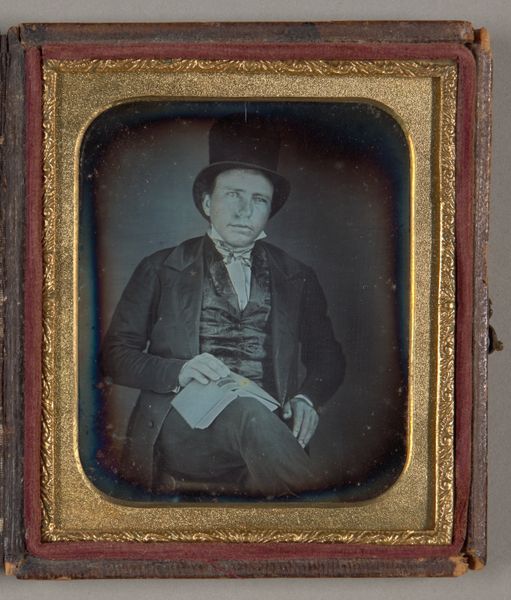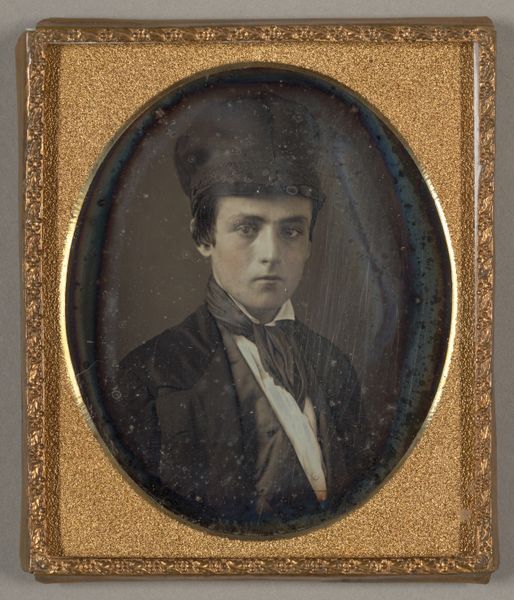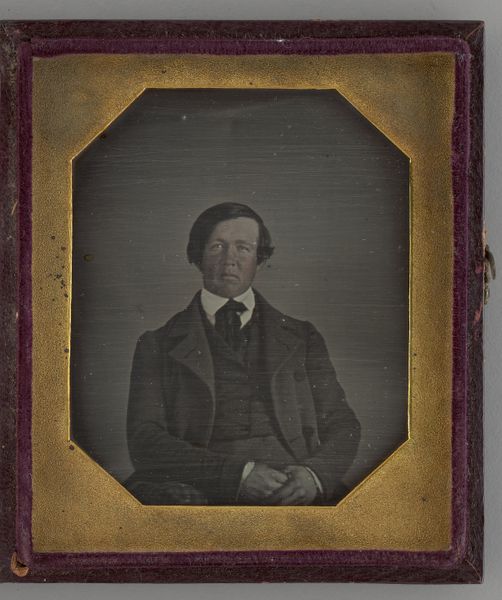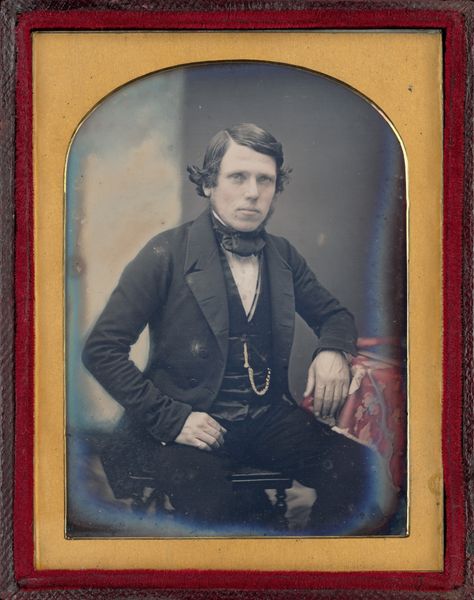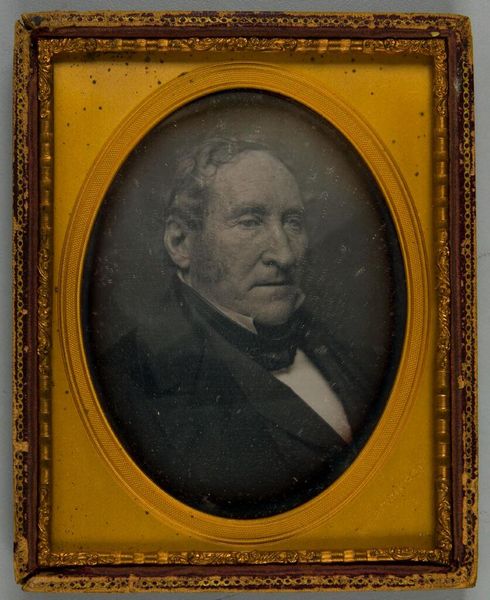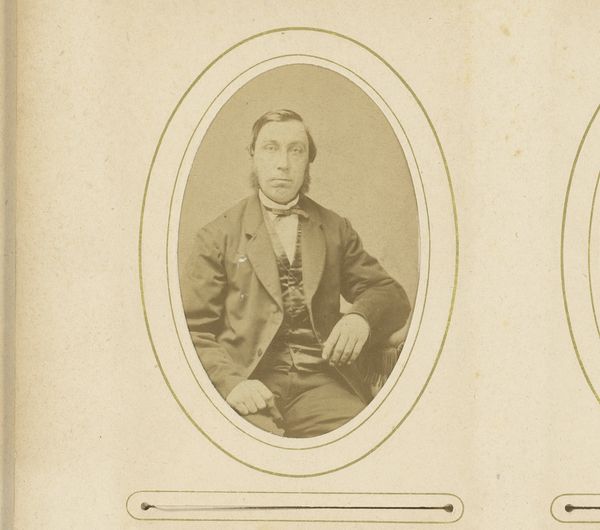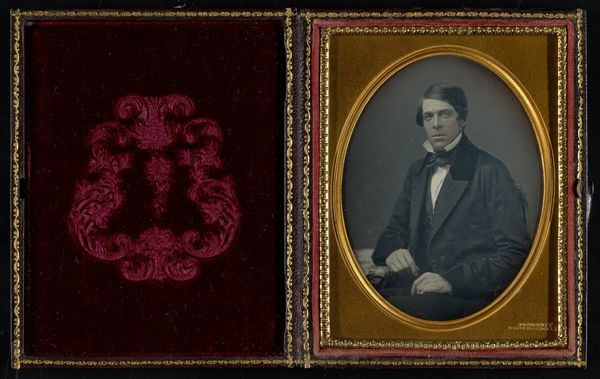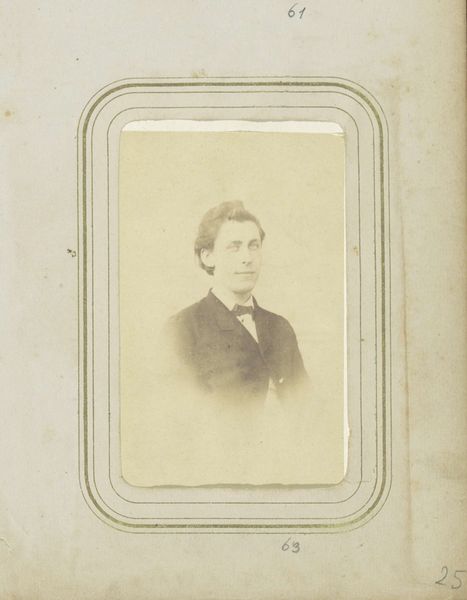
daguerreotype, photography
#
portrait
#
16_19th-century
#
sculpture
#
daguerreotype
#
photography
#
realism
Dimensions: height 93 mm, width 80 mm, thickness 14 mm
Copyright: Rijks Museum: Open Domain
This is a portrait of an unknown man by G. Brown. The image, small and encased, is a study in contrasts, rendered in a monochrome palette. The sitter's formal attire—dark coat and white shirt—creates a striking contrast, framing the face as the focal point. Light catches his features, drawing attention to his eyes. It’s hard to deny the implicit tension between revelation and concealment. The oval shape, echoed in the very structure of the frame, emphasizes the subject’s enclosed environment. This shape serves to isolate the figure from the world, almost like a specimen under glass. This semiotic play between the contained and the infinite destabilizes the viewer’s sense of space and perception. Is this simply a portrait, or is it a philosophical inquiry into being? The formal qualities of the portrait invite us to consider how early photography engaged with, and challenged, notions of identity, representation and reality. This discourse remains relevant, urging us to question our own assumptions.
Comments
No comments
Be the first to comment and join the conversation on the ultimate creative platform.
